From this day forward
November 23, 2011

The wedding of Denny Lyons and Terrie Madrid on Santa Monica Beach was less a storybook ending than a new beginning for the chronically homeless couple. Their big day—Friday, November 18—came about with help from a program called Project 60, which assists veterans like Lyons, who served in the Navy Reserve, to find permanent supportive housing, health care and treatment for mental health and substance abuse issues. Now, with a federal housing voucher in hand, the couple can move out of the Samoshel homeless shelter and into their own apartment.
Posted 11/23/11
From this day forward
November 23, 2011
This is not a fairytale love story.
Over the course of 23 years together, Denny Lyons and Terrie Madrid have lived in an improvised lean-to on a deserted restaurant patio. They’ve had—and lost touch with—a now-teenaged daughter and son. They’ve battled illness, unemployment, substance abuse.
In short, this chronically homeless pair has lived on the bleak side of “for richer and poorer, in sickness and in health” in a way most couples can’t begin to imagine.
But now, after more than two decades of bad choices and bad breaks—and with a big assist from an initiative called Project 60—they just took a step in a new direction.
They got married.
Their wedding, celebrated Friday on the beach in Santa Monica and captured in the video above, clears the way for them to live together in their own apartment under a recently-issued federal housing voucher.
Beyond that important practical benefit, the ceremony also marked something of an emotional milestone—a tribute to staying together against long odds.
“It’s time,” said Lyons, 58. “She stood by me through thick and thin. It’s been real hard on her.”
Or, as the V.A. chaplain who performed the wedding put it: “This is a good example of love in action.”
Things started looking up for the couple about 11 months ago, when they entered the Santa Monica shelter called Samoshel, run by the Ocean Park Community Center. For now, and until they get their own apartment, they bunk down every night in separate men’s and women’s sleeping facilities. But they were able to bring their little dog, Bambi, with them into the shelter—a crucial point as they debated whether to come in off the streets last winter.
Progress has accelerated in recent weeks with Lyons’ admittance into Project 60. The initiative is devoted to finding what’s known as permanent supportive housing for homeless veterans like Lyons, who served in the Navy Reserve. It’s a spinoff of the better-known Project 50, which has targeted some of the most chronic cases on downtown Los Angeles’ Skid Row with a holistic approach to housing, health care, mental health and substance abuse treatment. It’s estimated that 7,000 veterans are now homeless on Los Angeles County streets. Project 60 aims to help some of the most vulnerable among them, like Lyons, through a partnership of the West Los Angeles V.A., Los Angeles County and other government and nonprofit agencies.
Lyons is now receiving veterans’ benefits. He has been granted probation for what he described as old drug warrants that had him “living the life of a fugitive, more or less.” And he’s no longer panhandling on the street with a sign reading: “Smile. It could be worse. You could be me.”
Lyons, who said he once worked regularly in construction, said he’s been unable to find employment since he developed vascular necrosis in both hips. “It wiped out my ability to work,” he says.
And Madrid, 56, said she has lost touch with family—the18-year-old daughter and 15-year-old son she and Lyons had together, and her six other adult children. She said wistfully that she has tried unsuccessfully over the years to get back in contact with her mother and youngest child, who she thinks are living in Whittier. As she and Lyons sat down on their wedding day to list some of the good things that have happened to them lately, she said all that was missing was a reconnection with her family.
Still, “compared to where they were a year ago, it’s just night and day,” said Ben McAvay, who served as Lyons’ best man.
McAvay said he first met the couple 2½ years ago when they would stand every day at his bus stop as he headed to law school classes at UCLA. He said the wedding is just the “icing on the cake” in a saga of struggle and life changes.
“This is just like the cool part of the story,” McAvay said.
The wedding ceremony took place just south of the Santa Monica Pier—not far from where Lyons and Madrid once settled their sleeping bags into makeshift foxholes they’d dug in the sand to sleep each night during a particularly tough 8-month stretch.
A small knot of friends (human and canine) gathered to watch, as cyclists, rollerbladers and Hot Dog on a Stick customers wandered by, oblivious to the big occasion playing out in the shadow of the pier’s carousel. Lyons wore a tie and jacket (courtesy of a local thrift shop) and Madrid arrived in the wedding dress that the residents’ council at Samoshel bought for her, using money earned collecting bottles and cans. The bride had to keep reminding herself that she could now smile broadly for photos, thanks to a gift of dental work funded by her maid of honor, Linda Nixon.
Bambi, prompted by Samoshel project director Patricia Bauman, delivered the rings at the appropriate moment. Then it was time for retired U.S. Army Chaplain Herman Kemp of the V.A. to pronounce the couple husband and wife. There was applause, and a few happy barks.
Many challenges lie ahead, including surgery to replace both of Lyons’ hips.
But on Friday, there were blessings to be counted—among them the resilience to keep moving forward together over the course of many years.
“Hope,” Lyons said, “is the one thing you’ve got to keep.”
Posted 11/22/11
Giving back on Thanksgiving
November 22, 2011
If you think preparing Thanksgiving dinner for your family is tough, try cooking for 2,500. A large and diverse group of volunteers will do just that at the Westside Thanksgiving Community Dinner and Celebration, where all are invited to belly up to a communal feast. As the name implies, this event involves more than just food. Free medical consultations, children’s immunizations, clothing distribution, haircuts and eye exams will all be offered to seniors, students, low-income families and the homeless. A carnival with games, arts and crafts will make sure little ones stay entertained.
It’s all made possible by donations and volunteers. Many have signed up already—so many, in fact, that if you want to pitch in you’ll probably have to wait in line. The event still needs turkeys, though, so the best way to help probably involves dropping off a fully-cooked bird between 9 a.m. and 11 a.m.
The Thanksgiving Day event takes place on Thursday, November 24, at Santa Monica Civic Auditorium, 1855 Main St. It starts at 8 a.m. and dinner will be served from 11 a.m. to 3 p.m. See the website’s frequently asked questions section for more details.
Those looking for another way to contribute to a worthy cause might consider joining a Thanksgiving Day bike ride benefiting Meals on Wheels. Riders gather at 7:45 a.m. in Brentwood, and go as far as 50 miles roundtrip, but you can join in progress if you’d like to sleep more, or pedal less. More route details are here.
However you may choose to give back, please remember that the need for food, supplies and volunteers isn’t limited to the holiday season. Harsh economic times mean more demand and fewer donations, so year-round help is more important than ever. Westside Food Bank, Valley Food Bank, Los Angeles Regional Food Bank and other charities stand ready to gather and distribute supplies. Donations of goods, money or time can go a long way toward helping those who need it most.
Posted 11/22/11
Turkey Day damage control
November 22, 2011
Mmm. Turkey and stuffing, cranberries and sweet potatoes, pie and ice cream—few pleasures are as reliably delicious as Thanksgiving dinner, or as enduring: The basics alone will set you back thousands of calories.
Fortunately Los Angeles County has a bounty of public recreational options that can help offset the gluttony, many of them right here in the 3rd District. So as we load up our plates this week, let us also give thanks for the equally enduring pleasures of a Thanksgiving morning workout or a brisk walk after dinner. Here are some of our favorite menu additions for a healthy holiday:
Take a hike
It’s not an accident that a landmark in the Santa Monica Mountains is the headquarters for a health and fitness reality show. The hills and canyons of Los Angeles County have been an inspiration to millions, and the county’s trail system just keeps getting better. With the exception of a couple of small parcels, for instance, the 65-mile Backbone Trail is now almost entirely owned by the public, and the long-planned Coastal Slope Trail has passed several key milestones this year.
Enter the Fitness Zone
You don’t need to join a gym to improve your strength, flexibility or cardiovascular abilities. Thanks to the Trust for Public Land, outdoor gyms have been installed in the last four years in more than two dozen parks across the county, with durable, weather-resistant exercise equipment designed to let you get toned at no cost. Both El Cariso Park in Sylmar and Pan Pacific Park in Los Angeles now have Fitness Zones that are just waiting to help you whittle away that second helping of stuffing. (For a map of Fitness Zones, click here.)
Hit the bike trails
Better yet, ride over the river and through the woods on one of Southern California’s paved bike paths, some of which are world famous, after all. If you’re socially inclined, preface your dinner with one of the Thanksgiving bike rides that have been organized in places like Beverly Hills and Brentwood. With events like CicLAvia capturing the public imagination, pedal power has never been hipper than it is right now in L.A.
Step into liquid
You’ll probably need a wetsuit, but who in Los Angeles wouldn’t give thanks for our beaches? Even if you don’t like to surf in November, the Southern California coast offers endless fitness opportunities—for free. If you’re not a water baby, check out the Marvin Braude and Ballona Creek Bike Trails. Or make like Zev and take a beach run between Santa Monica and Marina del Rey before Thanksgiving dinner.
Pick up the pace
If you can walk, you can speed walk, or even jog a little. If you’re feeling really ambitious, maybe you want to sign up for one of this year’s “Turkey Trots” for runners in Burbank, Topanga and Van Nuys. More interested in proceeding at your own pace? Run the UCLA perimeter or shake a leg on one of the two jogging tracks at Van Nuys/Sherman Oaks Park. Out-of-town guests? Take the whole crew to the San Vicente median, jogging track to the stars (or, in any case, the almost-famous). It’s grassy, tree-lined, filled with beautiful people and easy to get to, and if you do the whole 6-mile loop from Ocean Avenue in Santa Monica to South Bundy Drive in Brentwood, it’ll knock about 600 calories from your intake. Or make room for extra pie.
Posted 11/22/11
This is how we rolled
November 17, 2011
Remember the Santa Monica Air Line? How about the Los Angeles & Independence?
Probably not.
But the two historic railways will be there—and not just in spirit—when the Expo Light Rail Line begins rolling from Downtown westward in just a few months, with its first terminus at La Cienega Boulevard.
Although the Westside’s first mass rail project in 50 years feels in some ways like the dawn of an era, Los Angeles has been down this road before. In fact, it has been down the same set of train tracks: The Expo Line will run on a historic railroad right-of-way that has carried Southern Californians, off and on, for more than 135 years now, first behind steam engines and then in iconic Red Cars.
“We’re definitely going back to the future,” jokes John Smatlak, a rail transit consultant and volunteer rail historian at the Orange Empire Railway Museum in Perris. “Of course, it looked a lot different back then than it does today.”
“This was a route that started out in 1875 as a steam railroad built by a silver baron,” confirms Matthew Barrett, research librarian for the Metropolitan Transportation Authority, “and then later became part of the Pacific Electric Red Car line.”
Indeed, Barrett says, some images of the Air Line from the Metro archive are being embedded as station tiles along the Expo Line as reminder of the connection. (See gallery below.)
Constructed by John P. Jones, a U.S. senator who had made a fortune in Nevada, the Expo Line route was originally the Los Angeles & Independence Railroad, the linchpin of a grand plan. Jones owned a silver mine in Inyo County and coastal ranch land where Santa Monica now stands. He wanted to connect the two with Los Angeles and persuade the city to situate its port near his slice of the shoreline.
However, his powerful rival, Southern Pacific Railroad, wanted the port to be near its lines in San Pedro, and Jones had lost bargaining power; his silver mine was exhausted. “Jones built the link from Downtown to Santa Monica, and then he went bankrupt,” says Barrett, the Metro research librarian.
In 1877, Southern Pacific bought Jones’ struggling railroad and turned it into a local freight and passenger hauler. Its cars would steam from an ornate Victorian depot Downtown to a long wharf built out into the ocean, carrying tourists and cargo through the then-sparsely populated fields and plains that would become L.A.’s Westside.
Eventually, Southern Pacific leased the line to a subsidiary run by Henry E. Huntington, the real estate tycoon nephew of the president of the railroad. Huntington electrified it and added it to the rail system he was building to less developed land holdings outside L.A.’s city limits.
Painted a bright, marketable red, Huntington’s electric cars ran between Downtown L.A. and increasingly far-flung suburbs, including Santa Monica. By 1908, the old Los Angeles & Independence rails were bustling with the so-called Red Cars and the line, which also carried a lot of freight, had been renamed “The Air Line,” a common term back then for the shortest distance between two points. In 1911, when a number of railroads merged in Southern California, it officially became part of the Pacific Electric railway.
At the peak of their popularity in the Roaring Twenties, the Red Cars covered some 1,100 miles of railway from the San Gabriel Mountains to San Bernardino to the beaches of Orange County. They became an essential part of Los Angeles’ culture and lore.
The Red Cars showed up in movies. They were written into waltzes. The depots became famous in their own right. Whole communities sprang up as so-called “streetcar suburbs.”
In his history of growth in Los Angeles, “The Reluctant Metropolis”, William Fulton wrote that Huntington “built a $60 million fortune around the Pacific Electric in little more than a decade.” But, he added, Huntington saw the Red Cars mostly as a tool for real estate speculation and disregarded the fact that, with so many lines going through L.A., “it would often take a PE [Pacific Electric] Red Car longer to leave the downtown area than to make the entire run to Pasadena or Santa Monica.”
Still, says Barrett, the Red Cars mapped the urban footprint of Southern California more than any other early influence, including the automobile. “Many assume that the freeways created our sprawl,” he says, “but it was the railways built many years earlier that laid the foundation for it.”
Eventually, Barrett and other historians say, a combination of factors caused highways and cars to displace the Red Cars. And no, they say, it wasn’t just the kind of auto and tire industry maneuvering dramatized in “Who Framed Roger Rabbit?” (“That was the Yellow Cars, not the Red Cars,” says Barrett. “That movie has done more to create incorrect local history than anything I can think of.”)
Angelenos were also the earliest auto adapters outside Detroit. Voters distrusted the railroads. Real estate speculators realized they didn’t necessarily need to invest along rail lines. By the late 1930s, the Automobile Club of Southern California was calling for “a network of traffic routes for the exclusive use of motor vehicles”—i.e., freeways—while rail advocates were struggling to build a consensus. When gas rationing during World War II ratcheted up demand for rail, it revived profits but underscored the need for investment in rail infrastructure.
“People always omit the context of the time,” says Smatlak of the Orange Empire Railway Museum—a resting place for most of what’s left of Southern California’s stock of retired Red Cars. “Yes, there were tire and rubber and gas and oil companies involved in shifting transit to buses. But by the 1950s, the rail system was really worn out and they were faced with making a massive capital investment.”
Adds Barrett: “If we have anyone to blame, it’s ourselves—or our grandparents—for not being on the steps of City Hall, demanding our electric railway system be preserved in 1943 after the first smog alert was generated.”
The Air Line stopped carrying passengers in 1953. Eight years later, the last Red Car rumbled into retirement. And, with the exception of a decade or two, Angelenos have been waiting for relief ever since, stewing in their cars.
Clearing the air, one city at a time
November 17, 2011
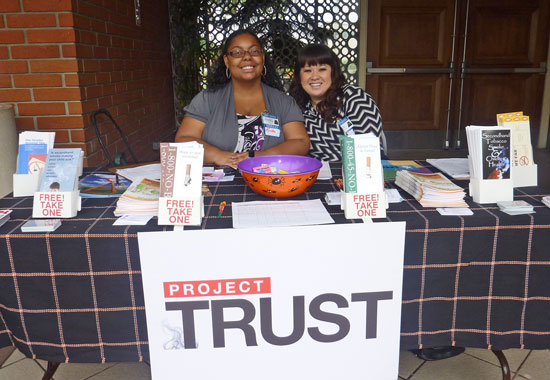
Public health workers Kristin McGuire, left, and Amber Tsujioka helped bring a new smoking ban to Compton.
Twenty-four years ago, when health advocates in Compton tried to restrict smoking, two City Council members defiantly lit cigarettes on the dais, then killed the plan before it could come to a vote.
We’ve come a long way, baby.
Last week, Compton passed a landmark ordinance to curb secondhand smoke in outdoor dining areas, parks, apartments and condos. Meanwhile, Hermosa Beach effectively outlawed outdoor smoking in virtually every part of the city where people gather.
On the other side of the 710 Freeway, the Downey City Council instructed staff to start drafting a law to restrict smoking in parks and other public places. This week, a tough, new, smoke-free housing measure was enacted in Baldwin Park.
The flurry of grassroots legislation—with more in the pipeline—isn’t accidental. For the past year and a half, the Los Angeles County Department of Public Health has been successfully leveraging a two-year, $16 million federal grant aimed at reducing smoking and exposure to secondhand smoke.
The initiative, known as Project TRUST and managed by the department’s Tobacco Control & Prevention Program, has been so successful that its efforts already have been extended under a new and broader Community Transformation Grant, underwritten by federal health care reform funding.
Although the Department of Public Health has long done educational campaigns to help communities discourage smoking, the federal money “has let us accelerate that work, and move into more challenging policy areas,” says Dr. Paul Simon, who heads the department’s Division of Chronic Disease and Injury Prevention. “We’re now getting into 10 or 15 cities a year.”
By law, the public health department cannot lobby, but it can educate the public, thus setting the stage for a community’s own advocacy. Under the grant, the county was able to hire six “community mobilization teams” and subcontract with nine community-based organizations to provide technical and educational support for local efforts to restrict smoking.
As the teams have fanned out in the past 18 months to do local polling, hand out literature and speak to community groups about tobacco, community activism has followed. Since the Project TRUST initiative hit the ground, local smoking ordinances have been revisited or broadened in Manhattan Beach, West Hollywood, Burbank, Los Angeles, South Pasadena, Santa Monica, Huntington Park, Torrance and Inglewood, as well as the aforementioned communities. Still other cities are in various stages of readying smoking ordinances for passage.
Particularly successful have been city-level efforts to cordon off no-smoking areas in apartment and condominium buildings, where secondhand smoke chronically plagues children and nonsmokers, particularly those with asthma. A recent policy brief from the UCLA Center for Health Policy Research found that nearly 1 million children in California are exposed to secondhand smoke every year.
Mandating smoke-free housing in apartment houses can be life-altering for families in rental units, but it has historically been a tough sell in lower-income areas, where smokers—who represent about 13% of California’s population—have tended to resist the notion that shared ventilation should keep them from lighting up in their own apartments.
A new state law that goes into effect Jan. 1 gives landlords the authority to ban smoking in rental units, but doesn’t mandate smoke-free apartments and condos. With the Compton and Baldwin Park votes last week, the county now has more than a half-dozen cities with smoke-free apartment ordinances, including Calabasas, which in 2006 pioneered the local movement.
And on November 16, Project TRUST will host a major policy forum on smoke-free apartments and condos in conjunction with the American Academy of Pediatrics and Children’s Hospital Los Angeles—a response to the growing number of local governments that are moving in that direction, says Project TRUST Director Robert Berger.
“It’s big,” says Berger. “We’ve reached a major tipping point in smoke-free housing here.”
Public health campaigns at all levels have for many years raised awareness of the dangers of tobacco, and state and federal restrictions have made dramatic inroads in the fight against tobacco-related illness. California was the first state to ban smoking in indoor workplaces in 1995.
But smoking still accounts for as many as 443,000 deaths a year nationally, including as many as 49,000 from exposure to secondhand smoke alone. According to the Centers for Disease Control & Prevention, more deaths are caused each year by tobacco use than by all deaths from HIV, illegal drug use, alcohol use, motor vehicle injuries, suicides and murders combined.
While overall smoking rates have been trending downward, higher smoking rates persist in a number of vulnerable sub-populations, including African American, Latino and Asian men, people with low income and education, the homeless, substance abusers and people living with mental illness.
In some policy efforts, such as the one that led to smoke-free housing in Pasadena, the county has played more of a supportive than lead role. In others, Project TRUST has collaborated with subcontractors such as the National Council of Alcohol and Drug Dependence South Bay or Smoke-free Air for Everyone (SAFE).
In most instances, the County’s technical and educational assistance has been welcome, but in a few, it has been met with confusion. When a City Council discussion of a ban in Downey drew a standing-room audience and a blizzard of letters, for instance, one councilman accused another of manufacturing “a sexy political issue for your campaign next year for the assembly.” Another was quoted in the local press as saying he had “never received a letter or comment on this until the last three weeks.”
Much more common, however, have been experiences like the one that will now set aside smoke-free apartments and condos in Compton, where the county’s mobilization team—a pair of young Public Health contract employees named Kristin McGuire and Amber Tsujioka—did most of the groundwork, beginning with a survey last year to assess the community’s level of concern about smoking.
As the pair became ubiquitous at PTA meetings, churches, community groups, senior centers and health fairs, the community began to coalesce in favor of smoke-free housing. Letters began to arrive at City Hall. High school kids began to show up around town in “Smoke-free Compton” t-shirts.
“A lot of the community members were unfamiliar with the impact of secondhand smoke,” says McGuire. “And when they would ask about possible solutions, we’d tell them how other communities were able to educate each other and form coalitions.”
It didn’t hurt that Compton City Councilwoman Yvonne Arceneaux had a longstanding interest in the dangers of smoking.
“I had led a movement a number of years ago to ban alcohol and tobacco billboards in the city of Compton,” says Arceneaux, “and I had had a bad experience with my daughter in an apartment situation. She’s a non-smoker with two small children and she had lived in Texas in an apartment below two smokers.
“It was coming through the vents, and for the first time in their lives, they were experiencing problems with asthma. It was horrible.”
Within six months of the county’s involvement, Arceneaux says, an ordinance was drafted, with technical help from the county.
McGuire, the Project TRUST mobilization team member, says her work in Compton has been “very rewarding” and hopes she’ll be able to continue working with the city as it implements its new ordinance.
Arceneaux, meanwhile, says the mood in Compton couldn’t be more different from that meeting in 1987. The measure passed easily, to the cheers of an audience full of teenaged Smoke-free Compton supporters. And so far, she added, no one’s complaining.
“I think this time the community was ready for it,” she says.
Posted 11/3/11
Pushing for a better, bolder bike plan
November 17, 2011

Los Angeles County's getting a new bike plan, and some think it should do more to attract new riders.
As Los Angeles County closes in on its first updated bicycle master plan in 36 years, cycling advocates this week urged planners to incorporate more ambitious and innovative approaches to making streets welcoming for bicyclists of all ages and abilities.
The plan as currently drafted would add 816 miles of new bikeways in unincorporated Los Angeles County over the next two decades, at a cost of $327.7 million. But critics say the plan relies too heavily on the lowest category of bike route—just signage, no dedicated lanes—and doesn’t embrace enough forward-thinking solutions for getting new riders to brave Los Angeles County’s streets.
“The plan before you…is basically straight out of the ‘70s,” said Eric Bruins, a USC cycling coach who was among those turning up on Wednesday to address the county’s Regional Planning Commission as it prepared to take up the plan, the county’s first since 1975.
Bruins told the commission to look no further than Long Beach for examples of cutting edge design, such as “cycle tracks” that separate bike lanes from automobile traffic with a row of parked cars.
“We’ve unnecessarily limited our toolbox, and the kinds of facilities that are missing from this toolbox are those that are going to actually increase ridership,” Bruins said.
Bruins also urged bike planners to take a page from another upcoming county initiative, the proposed Healthy Design Ordinance, to make sure that the best possible designs for cyclist and pedestrian safety are written into the plan.
The county’s plan, developed with the Department of Public Works acting as lead agency, requires approval from the Regional Planning Commission before it can move to the Board of Supervisors for final consideration.
Commissioners heard testimony Wednesday, but then voted to delay a decision until Jan. 11, 2012, to allow time for completion of the plan’s final environmental impact report.
The commissioners praised the work that has gone into the bike plan so far—and so did some of the speakers.
Alexis Lantz, planning and policy director for the Los Angeles County Bicycle Coalition, commended the county for its efforts and acknowledged the complexity of the job. But, she told the commission: “We feel there’s still work to be done to create a visionary bike plan that will truly serve our unincorporated communities for the next 20 years.”
Among other suggestions, she said the plan should give greater priority to improving cycling conditions in low-income communities and in areas with high obesity rates and significant concentrations of bicycle-related accidents.
The plan envisions adding several different kinds of bikeways to the county’s current 144-mile network. It proposes creating 70.6 miles of dedicated, car-free Class 1 bike paths. It also would add 265.9 miles of Class 2 bike lanes on streets with markings to delineate a place for bikes to ride.
And there would be 21.3 miles of “bicycle boulevards”—neighborhood streets with traffic-slowing measures in place to create better venues for cycling and walking.
Most of the new bikeways, however, would be Class 3 bicycle routes—shared roads with signs reminding drivers that cyclists are using the street but without specially designated lanes for bikes. Those would account for 458.6 miles of the 816 total miles proposed.
One speaker, Michele Chavez of the Antelope Valley High Desert Cyclists, told the commission that she was “very pleased” with the plan overall. But she said some of the proposed Class 3 routes are in areas where speeding motorists are common—and hazardous to people on bikes.
“I’m concerned that what will happen is that just a green sign will be put up that says ‘bike route’ and the cyclists will be no safer on these roads,” Chavez said, suggesting that two- to four-foot paved buffers be installed along the routes.
Sam Corbett, an Alta Planning + Design consultant who helped prepared the bike plan for the county, said the Class 3 routes should not be dismissed as unambitious.
“Class 3 facilities aren’t just all signage and stenciling,” he said. He said that 270 miles of the Class 3 routes would require road widening to increase the travel lanes to at least 14 feet in each direction to accommodate cyclists as well as cars.
Overall, Corbett said, the bike plan could help pave the way for a bicycle transformation in Los Angeles County similar to what’s happened during the past 15 years in Portland, Oregon.
“In 10 or 15 years, I think we can be where Portland is now,” Corbett said.
But some speakers, like Alice Strong of the West San Gabriel Valley Bicycle Coalition, said that’s too long to wait.
“I hope we don’t take 15 years to catch up with Portland. I’m sorry, but we should be leading,” Strong said. “We should be the innovators here.”
Strong said she would like to see many of the Class 3 routes upgraded to Class 2 lanes.
“We want to get more women cycling,” she said, “and we just don’t feel safe with just a little sign.”
Posted 11/17/11
Ticket sales rise when subways locked
November 17, 2011
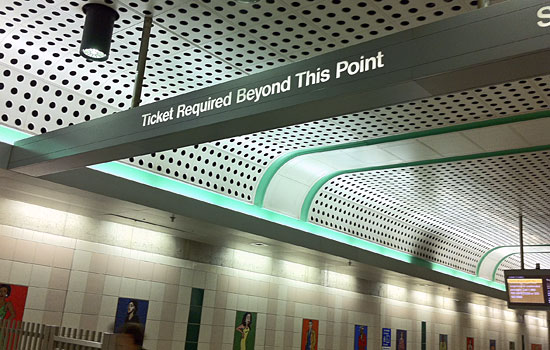
With Metro testing locked subway turnstiles, signs like this one in the Civic Center station take on new importance.
As thousands of L.A. subway riders have learned in recent weeks, honesty is the best policy—especially when somebody’s watching to see whether you paid to ride.
Recent testing to determine the financial impact of locked turnstile gates at four stations, including ticket checks by uniformed inspectors, boosted vending machine sales of day passes and one-way fares by about 50% while gates were locked.
“It was apparent many customers were using [ticket vending machines] for the first time,” according to a report to the agency’s Board of Directors.
As ticket sales went up, overall station entries decreased by 10% during the testing period as some travelers were apparently deterred by the locked gates and presence of ticket-checking staff.
Nevertheless, vending machine revenue was up 35%, the report said. Over time, as customers became accustomed to locked gates, that boost could be expected to level off, perhaps settling around 20%.
The gate-locking trial run also has had financial implications for the traveling public; dozens have been hit with citations carrying fines of up to $250 for riding without a ticket or pass.
The testing comes as Metro continues moving away from its original honor-system approach on the subway toward the locked turnstile set-up common in other large cities such as New York and San Francisco.
The conversion started in 2008, when Metro’s board approved a 10-year, $46 million lease contract to retrofit the Red Line, the Purple Line and some light rail stations with barrier gates—both as a security measure and as a way to recoup lost revenues estimated at the time to be about $5.5 million a year.
Since the gates were installed, however, some have questioned whether the cost of monitoring a locked subway system would outstrip any gain in revenues.
The report did not specifically address that issue, but said the preliminary revenue findings were “quite positive.”
More testing is needed, the report said, to see if patterns hold true when gates are locked during peak travel hours, from 1 p.m. to 6 p.m. To that end, a new round of locked-gate testing started Oct. 26 and is expected to continue through January 11, 2012. Upcoming stations targeted for the tests are UniversalCity, North Hollywood, Hollywood/Vine, Civic Centerand 7th/Metro.
In conjunction with the locked gate testing, Metro is heavily promoting use of its TAP cards, which can serve either as transit passes or as stored-value cards from which funds are deducted each time they’re used. The TAP cards aren’t just quick and convenient for riders; they also enable the agency to keep better track of ridership and ensure that everybody’s paying their way.
But there are challenges because some 40% of riders surveyed did not use the cards, or had transferred from other transit agencies that are not yet part of the TAP system.
Even among the 60% of customers with TAP cards, there were issues.
Up to half did not tap their pre-paid cards unless “encouraged” to do so, the report said. And when the turnstiles were in their usual “free-spin” mode, only 25% bothered to tap.
Posted 11/17/11
Homeward bound with Kobe and friends
November 16, 2011
Los Angeles Laker Kobe Bryant, Supervisor Zev Yaroslavsky and about 5,000 others will lace up their sneakers this Saturday for United Way HomeWalk 2011. The event is aimed at ending homelessness in L.A., which has more people living on the streets than any other city in the country.
“HomeWalk is a platform for thousands of Angelenos to present a united front against homelessness,” said Elise Buik, president and CEO of United Way of Greater Los Angeles. “By mobilizing our residents, we can continue to raise the funds and awareness necessary to create pathways out of poverty, getting the homeless off of the streets and into housing.”
Over the past four years, the 5K run/walk has raised $1.7 million and helped more than 9,000 homeless people get housing. With an estimated 51,000 living on L.A.’s streets on any given night, there is plenty of work left to do.
Opening ceremonies for the event begin at 8:30 a.m. with music and a few remarks from Bryant and Buik. The walk itself is from 9 a.m. to 10:15 a.m., setting out from Exposition Park at 700 Exposition Park Drive. Exhibits along the route will teach participants about homeless life and how people can get on the path to permanent housing.
To join the effort, register online individually or with a team for $25, or donate in the name of participants. United Way has tips and tools for fundraising, and T-shirts will be given to all registrants. You can even join “Team Kobe” to help the Lakers’ superstar reach his personal goals.
Posted 11/16/11




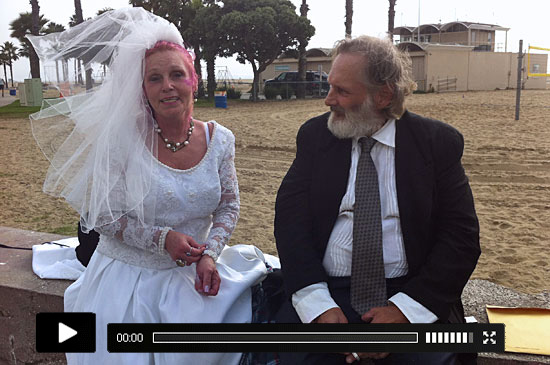
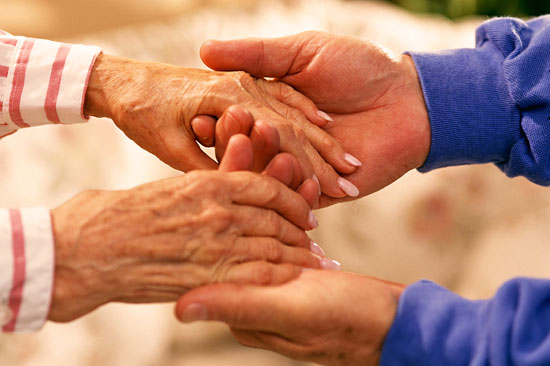
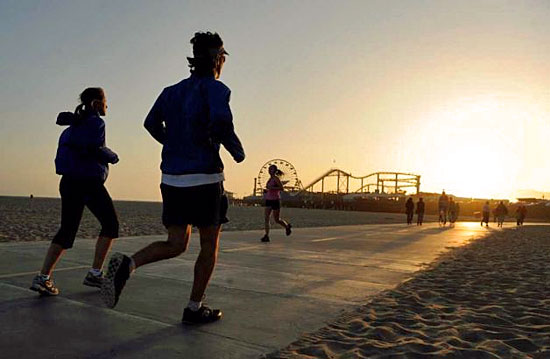
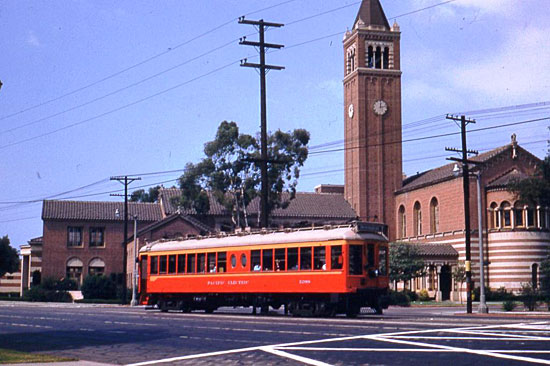
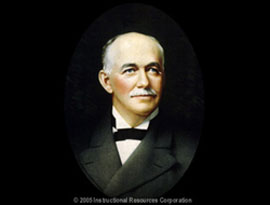










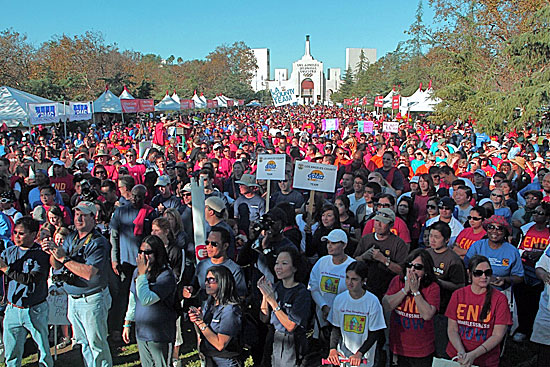





 Check for the latest closure information
Check for the latest closure information








